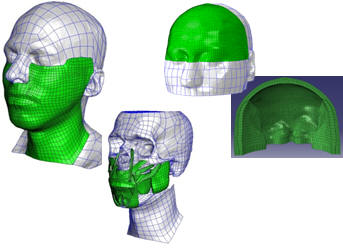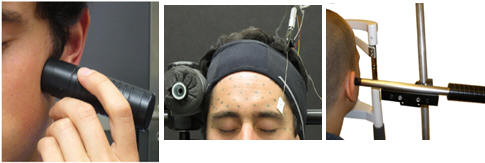Finite Element Modeling of the Face
Understanding of the mechanics of soft biological tissue allows simulating and predicting the mechanical response of complex tissue structures and organs. This provides new opportunities to deliver useful information to the medical community.

This research project aims at developing anatomically based finite element models of facial structures in order to provide new measures in the analysis of surgical techniques, implant design and to simulate the mechanical response in face aging and facial expressions.

This requires an experimental characterization of mechanical properties of individual facial tissues as well as a mechanical description of the interaction between different tissue layers. The aspiration technique, pull/tension experiments, ultrasound and magnetic resonance imaging methods are combined in order to provide a thorough description of the tissues of interest.

The finite element method provides a powerful tool to analyze the experimental data in order to understand and verify deformation mechanisms in aging, in facial expressions or related to tissue pathologies
Project Lead
Johannes Weickenmeier
Partners
Prof. Jabareen, Israel Institute of Technology Haifa, Israel
Prof. Brieu, Laboratoire de Mécanique de Lille, France
Prof. Ellen Kuhl, Stanford University, USA
Michael Wyss, University and ETH Zurich, Switzerland
PD Dr. med. Gustav Andreisek, University Hospital Zurich, Switzerland